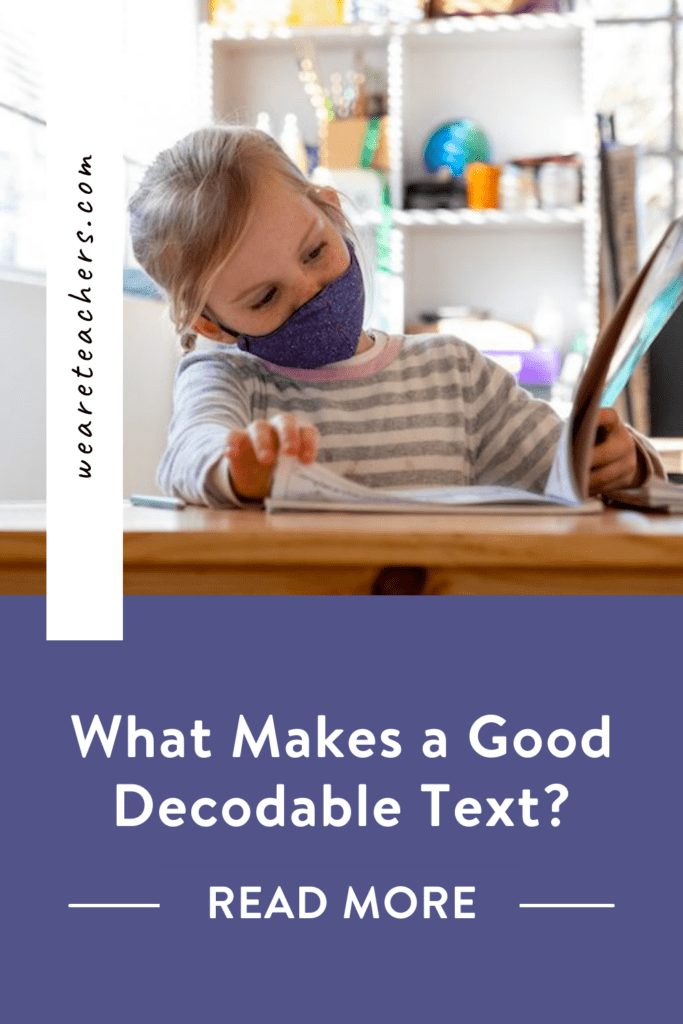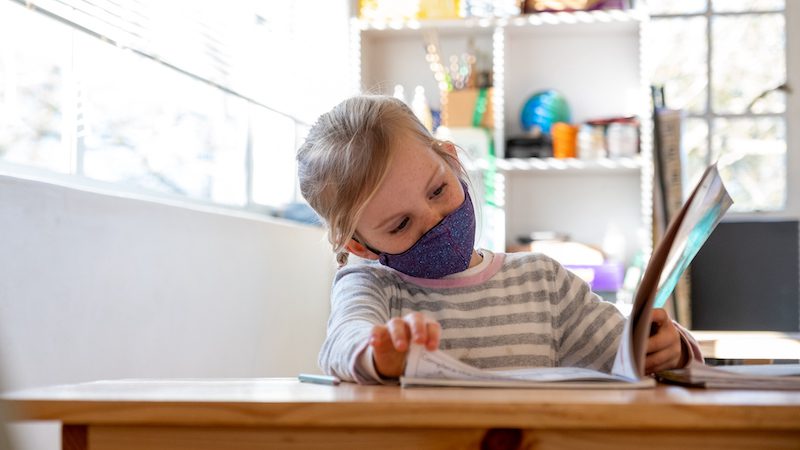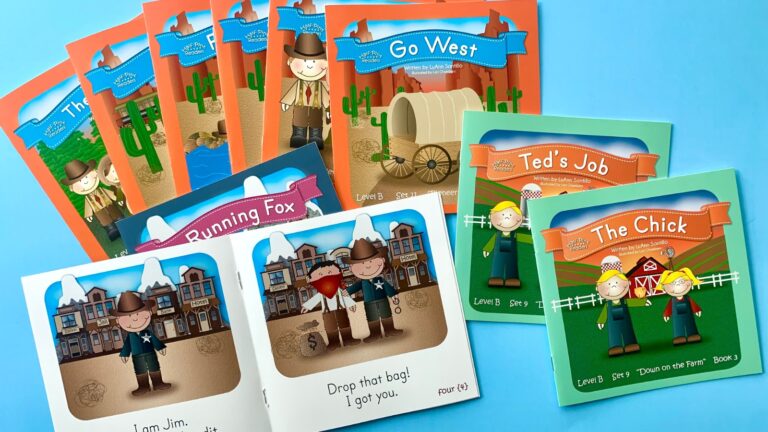There’s no doubt about it. Decodable texts have a bad reputation─and sometimes for good reason. There are a lot of lemons out there, along with weak instructional practices for using them. There are, however, many high-quality ones available that deserve wide usage by teachers and districts. These texts afford many children rapid reading progress that can’t be denied. Let’s dive into a brief review of what decodable texts are and why they are a boon to creating a healthy, motivating sense of accountability and confidence in students in K-1.
What Are Decodable Texts?
Decodable texts are an important tool in explicit, systematic phonics and reading instruction. Why? Because the text is controlled based on the phonics skill taught up to that point in the scope and sequence, with an emphasis on the new target skill for that instructional cycle (e.g., week of instruction). That is, most of the words in this text can be sounded out based on the sound-spelling relationships that students have learned. As a result, the children get loads of opportunities to apply those skills in real reading experiences.
Here’s an example for when you’re teaching long o (ō)

If you are teaching Long o (ō) spelled oa and ow, the students might read a book called The Slow Boat. This book would contain a lot of words with oa and ow, as well as words with previously taught phonics skills. It would also contain some high-frequency words─words like the, come, and was─that have been taught. It might even contain a couple vocabulary words that would be neither decodable nor high-frequency words already taught, such as river (although these words would be minimal or not exist in text at all).
Why are they called accountable texts?
The best texts for reading practice are those that we can reasonably hold students “accountable for” because they reflect what we have recently taught them. By contrast, if we have children read leveled texts after a phonics lesson, it wouldn’t really be fair to hold them accountable for decoding it because there isn’t a reliable, close connection between our lesson and the leveled text. Best of all, students like the obvious connection to the lesson; it makes reading practice more focused and purposeful. When texts are accountable they:
- Have a high percentage of decodable words that students can sound out based on the phonics skills that have been taught.
- Contain practice with the high-frequency words teachers have taught, so the sentences are natural sounding.
How can I tell if the decodable text is high quality?
The tight connection between what students learn in phonics and what they read is essential for building a foundation more quickly in early reading. So, to achieve this tight connection, you need to choose your decodable texts wisely. Avoid DIY decodable texts you can purchase or download off the internet, as these are often poorly executed. Instead, you want colorfully illustrated, well-written stories and nonfiction. In 1985, the government document Becoming a Nation of Readers provided a set of criteria for creating controlled, decodable texts. This type of text should include the following three characteristics:
- Comprehensible: The text must make sense. Vocabulary must be understandable. Words must be derived from students’ speaking and listening vocabularies. The stories should make sense and follow natural-sounding English patterns of spoken and written English. No sentences should be in these stories that you, as a proficient speaker and reader of English, have not uttered, written, or read.
- Instructive: The majority of the words must be decodable based on the sound spellings previously taught. A strong connection between instruction and text must exist, as this provides students with adequate practice.
- Engaging: Connected text must be engaging enough for students to want to read it again and again. Just because this text is an instructional tool doesn’t mean we should throw our standards for enjoyment out the window. Students need to revisit the text to develop fluency and increase reading rate. The text should be worth revisiting (and talking and writing about).
In my recent book Meaningful Phonics and Word Study, I also share red flags of poor decodable texts and distinguish them from pattern texts/predictable texts and leveled texts. In A Fresh Look at Phonics, I do a deep dive into why reading connected texts is one of the seven essentials of effective phonics instruction.
Here’s how to use decodables during and after the phonics lesson
We know that application is when the learning “sticks.” In too many classrooms, though, I see the phonics lesson exist in isolation, like a tiny island in the sea of the school day. Decodable texts can help connect the lesson to meaningful reading and writing. In fact, authentic reading and writing should make up at least 50 percent of the phonics lesson itself! Then, after the lesson, students can apply the skills embedded in these controlled texts to their own writing. It’s a win-win because the text builds phonics mastery and increases student motivation to read (e.g., develops an “I can do it!” attitude because of the success students have with these texts and writing about them. Following are a few favorite routines to try:
Schedule independent reading and partner work
Students can read decodable texts after the lesson alone or with others. Building in as little as five minutes a day of reading practice builds fluency and reading stamina.
Compile book bags of decodable texts
Students can take home zip-close plastic bags of a few books for practice. Mix in or transition to leveled texts and trade books as students progress. When caregivers see their child’s early reading growth, it strengthens the home-school connection.
Use these texts for meaningful writing─every day
Along with decodable texts for phonics follow-up practice, have students apply the phonics learning immediately to meaningful writing. When we ask students to write about a decodable text they have just read, they must, by the very nature of the task, use words from the book containing the new target skill. This is an ideal way to get students to start using the skill in writing. Plus, the students have the decodable story available for support.
Extend into independent work time
This writing can begin during a phonics lesson and extend into independent work time. So, if you read a decodable fiction story, have students write a retelling, write what happens next, put the characters in a new setting, and so on. If you read a nonfiction decodable, have students make a list of 2-3 things they learned, or tell the most interesting thing they learned about the topic and what they still wonder about. Every decodable text read during a phonics lesson must be followed up with an engaging writing exercise─every one.
Reading is one of the greatest gifts we can give a child.
It’s a gift that can never be taken away. It will forever transform a child’s life, opening the door of possibility. As teachers, you give children that gift every year. I know what an enormous responsibility it is to do it right and do it well. I can never express my admiration for teachers enough. Thank you. Your efforts matter.


